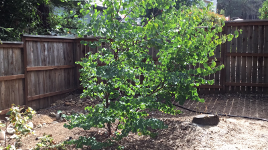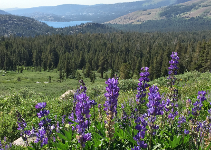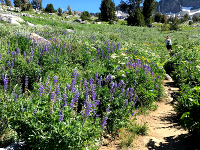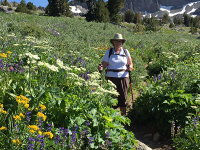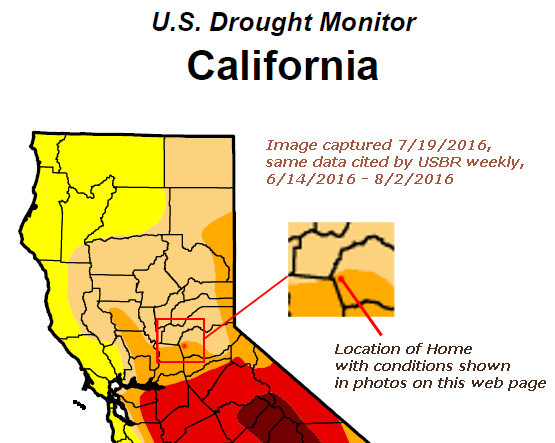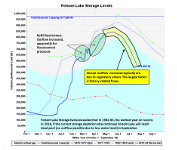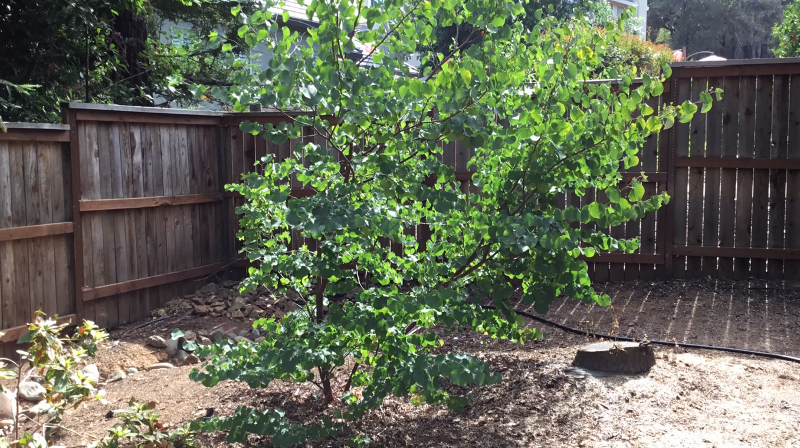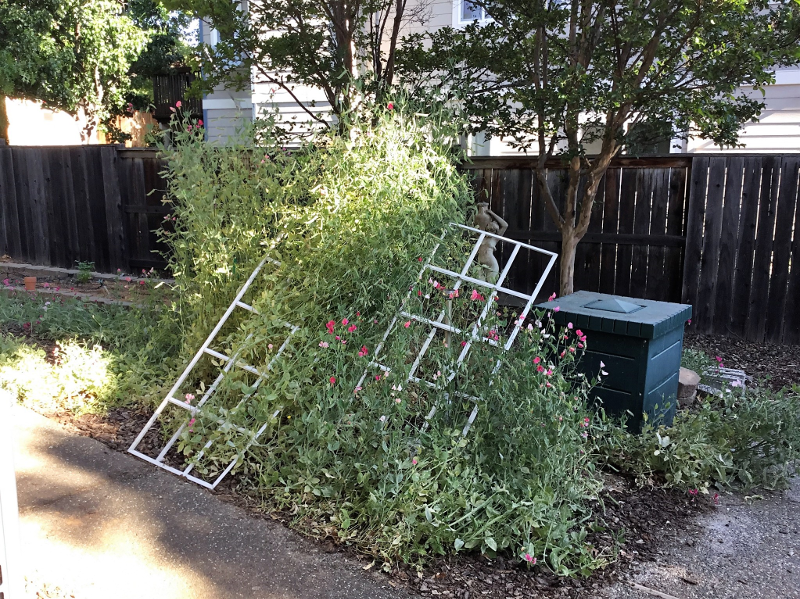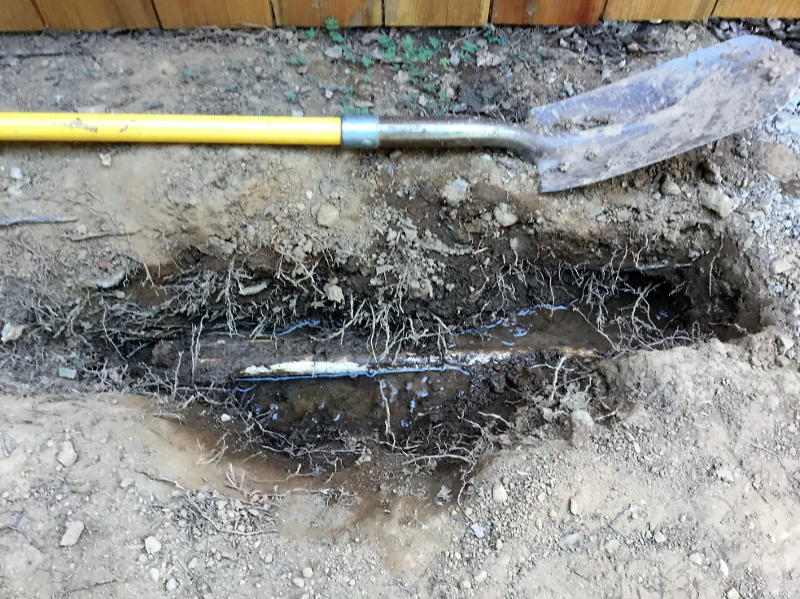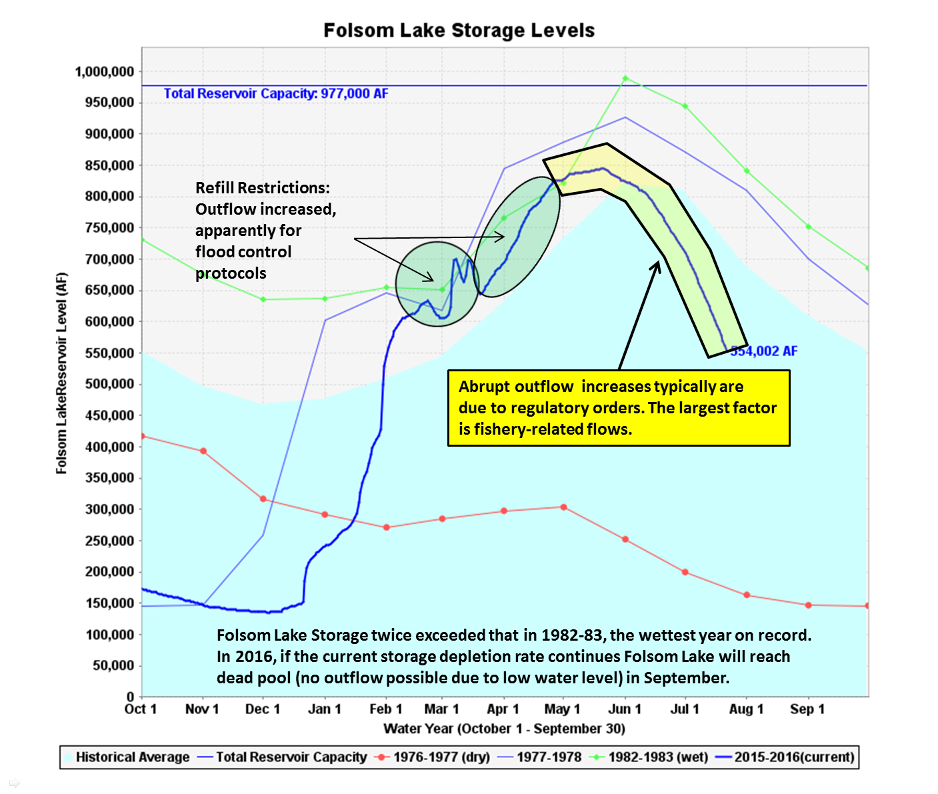in El Dorado Hills, at this writer's home: 0.8 miles from Folsom Lake at high water,
about 3 miles from the lakeshore at 2015 record low storage.
Volunteer western redbud
8 ft high
in EDH unirrigated area
first week of July, 2016
8 ft high
in EDH unirrigated area
first week of July, 2016
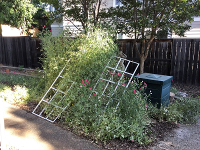
Volunteer sweet peas
7 ft high
in EDH unirrigated area
first week of June, 2016
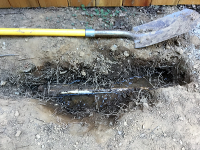
Trench revealing water table
6 inches below ground level
in EDH unirrigated area
first week of June, 2016
